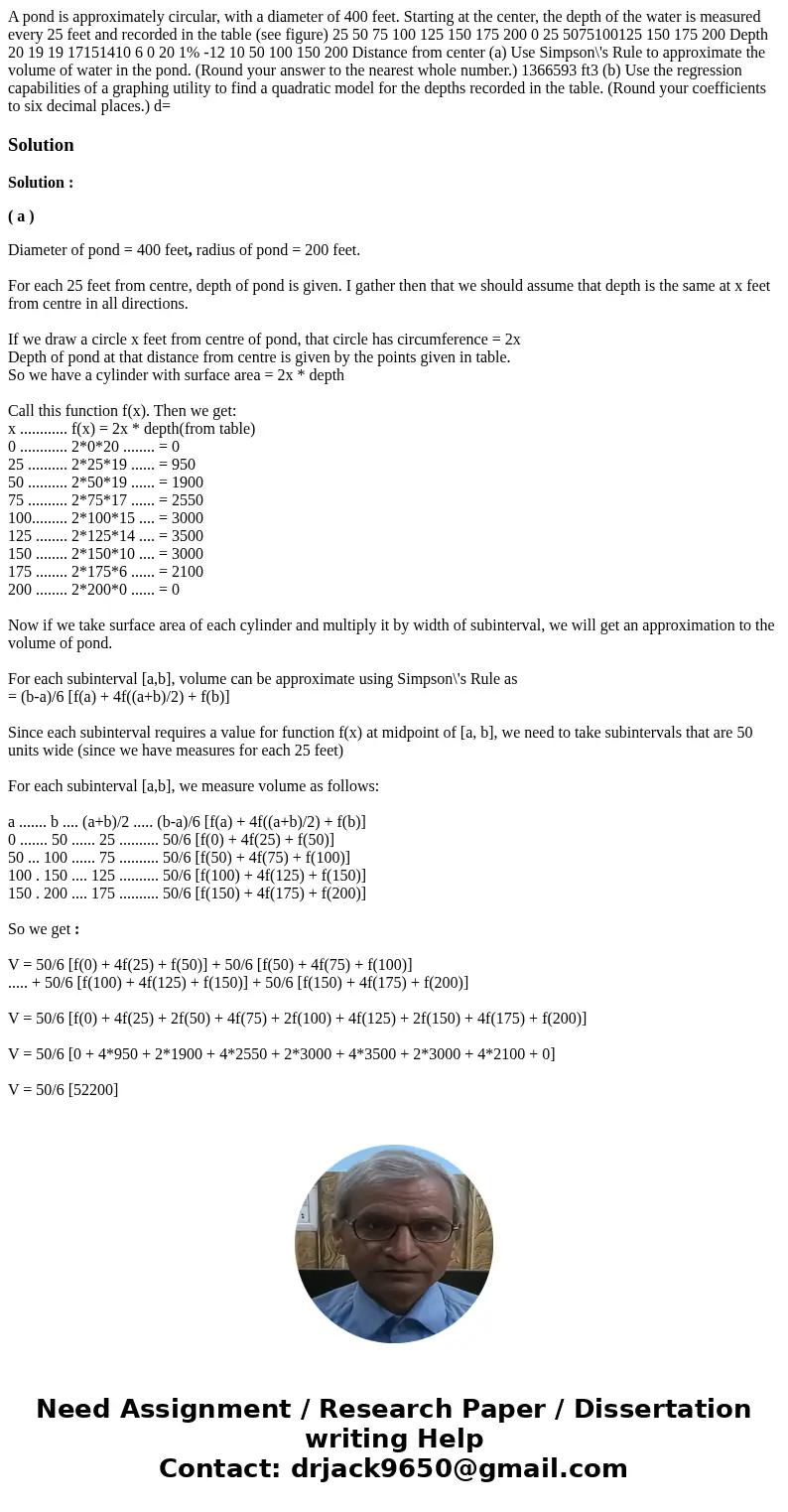A pond is approximately circular with a diameter of 400 feet
Solution
Solution :
( a )
Diameter of pond = 400 feet, radius of pond = 200 feet.
For each 25 feet from centre, depth of pond is given. I gather then that we should assume that depth is the same at x feet from centre in all directions.
If we draw a circle x feet from centre of pond, that circle has circumference = 2x
Depth of pond at that distance from centre is given by the points given in table.
So we have a cylinder with surface area = 2x * depth
Call this function f(x). Then we get:
x ............ f(x) = 2x * depth(from table)
0 ............ 2*0*20 ........ = 0
25 .......... 2*25*19 ...... = 950
50 .......... 2*50*19 ...... = 1900
75 .......... 2*75*17 ...... = 2550
100......... 2*100*15 .... = 3000
125 ........ 2*125*14 .... = 3500
150 ........ 2*150*10 .... = 3000
175 ........ 2*175*6 ...... = 2100
200 ........ 2*200*0 ...... = 0
Now if we take surface area of each cylinder and multiply it by width of subinterval, we will get an approximation to the volume of pond.
For each subinterval [a,b], volume can be approximate using Simpson\'s Rule as
= (b-a)/6 [f(a) + 4f((a+b)/2) + f(b)]
Since each subinterval requires a value for function f(x) at midpoint of [a, b], we need to take subintervals that are 50 units wide (since we have measures for each 25 feet)
For each subinterval [a,b], we measure volume as follows:
a ....... b .... (a+b)/2 ..... (b-a)/6 [f(a) + 4f((a+b)/2) + f(b)]
0 ....... 50 ...... 25 .......... 50/6 [f(0) + 4f(25) + f(50)]
50 ... 100 ...... 75 .......... 50/6 [f(50) + 4f(75) + f(100)]
100 . 150 .... 125 .......... 50/6 [f(100) + 4f(125) + f(150)]
150 . 200 .... 175 .......... 50/6 [f(150) + 4f(175) + f(200)]
So we get :
V = 50/6 [f(0) + 4f(25) + f(50)] + 50/6 [f(50) + 4f(75) + f(100)]
..... + 50/6 [f(100) + 4f(125) + f(150)] + 50/6 [f(150) + 4f(175) + f(200)]
V = 50/6 [f(0) + 4f(25) + 2f(50) + 4f(75) + 2f(100) + 4f(125) + 2f(150) + 4f(175) + f(200)]
V = 50/6 [0 + 4*950 + 2*1900 + 4*2550 + 2*3000 + 4*3500 + 2*3000 + 4*2100 + 0]
V = 50/6 [52200]
V = 435,000
V 1,366,593 ft3
( b )

 Homework Sourse
Homework Sourse